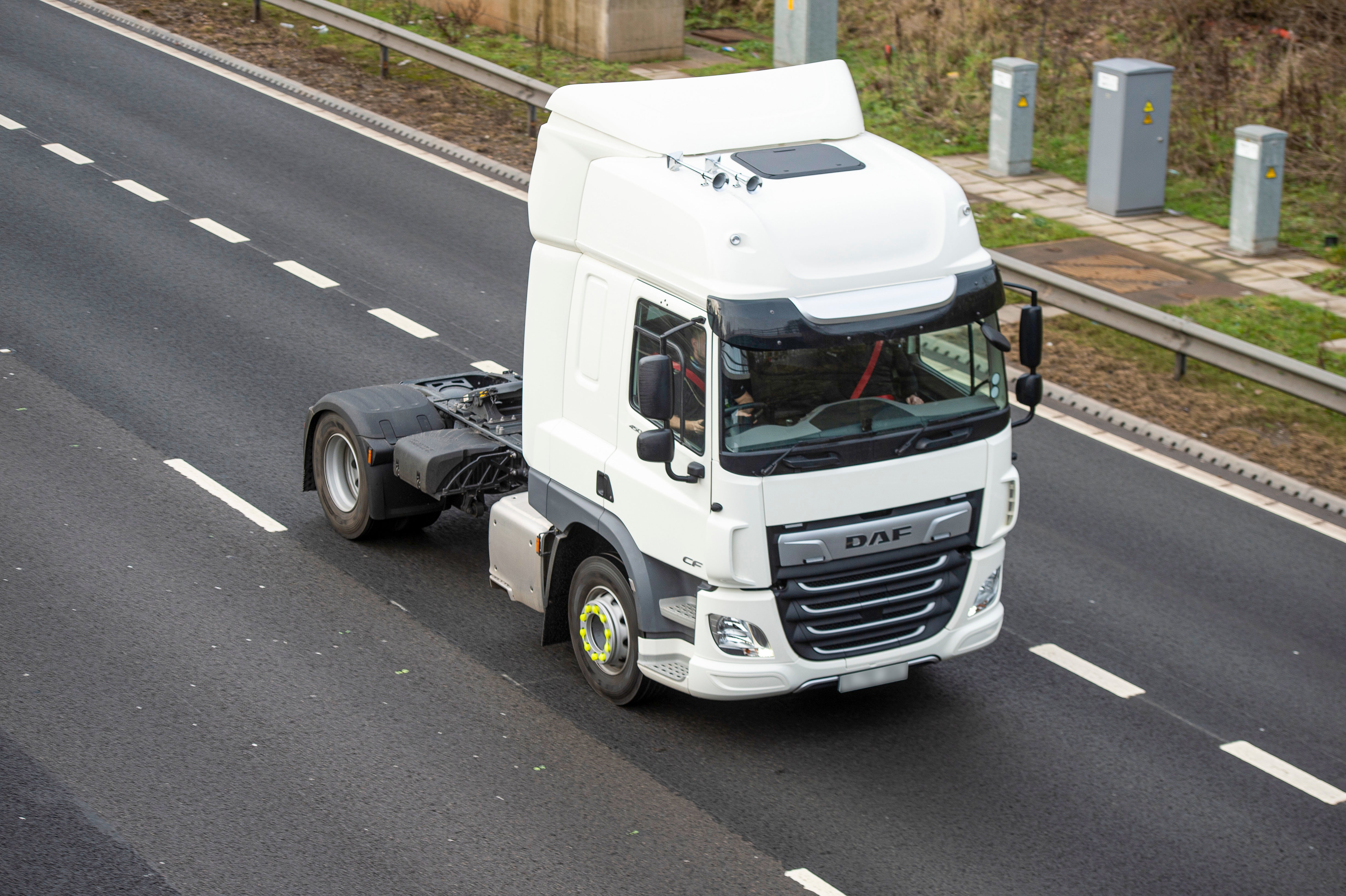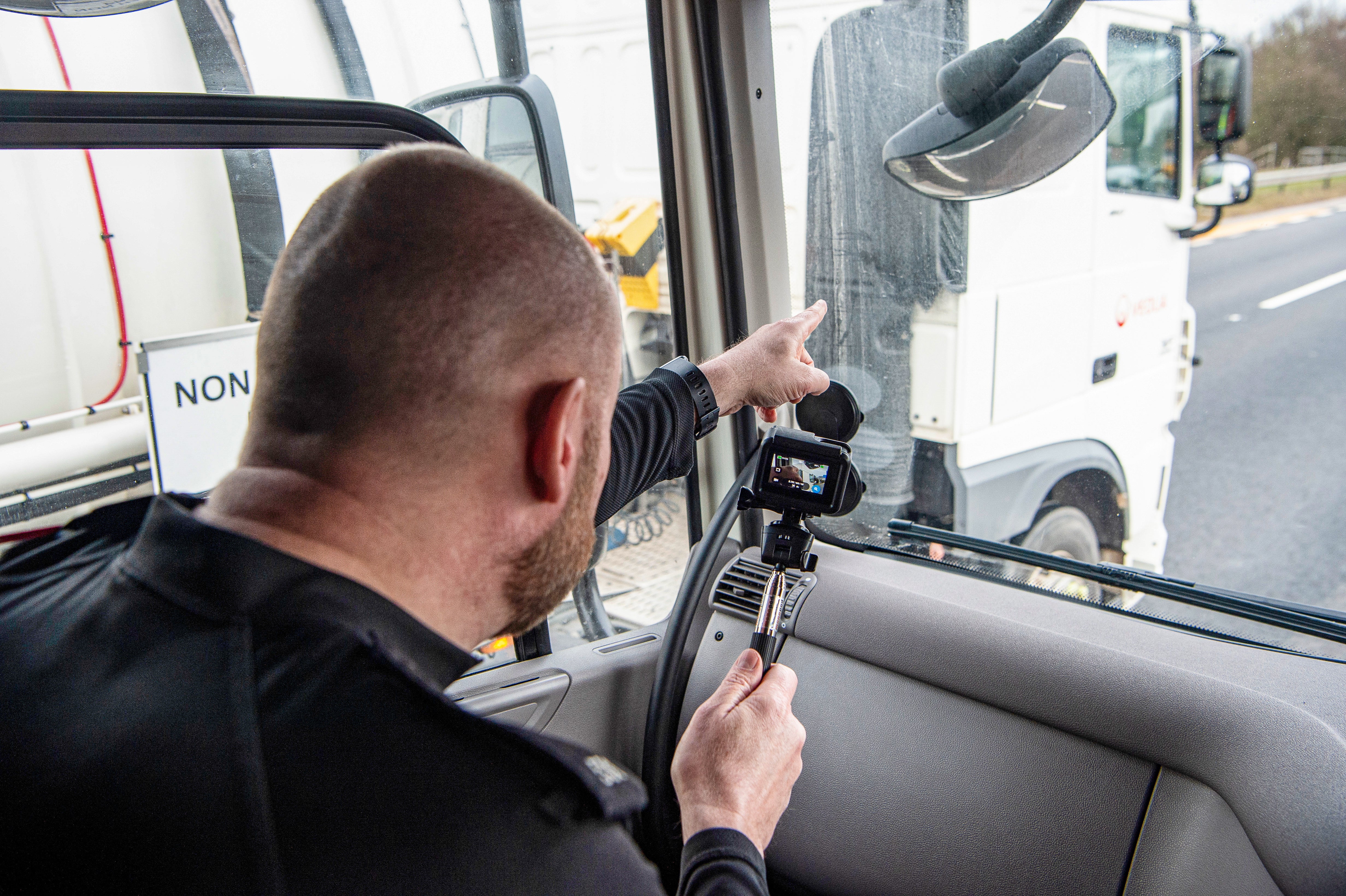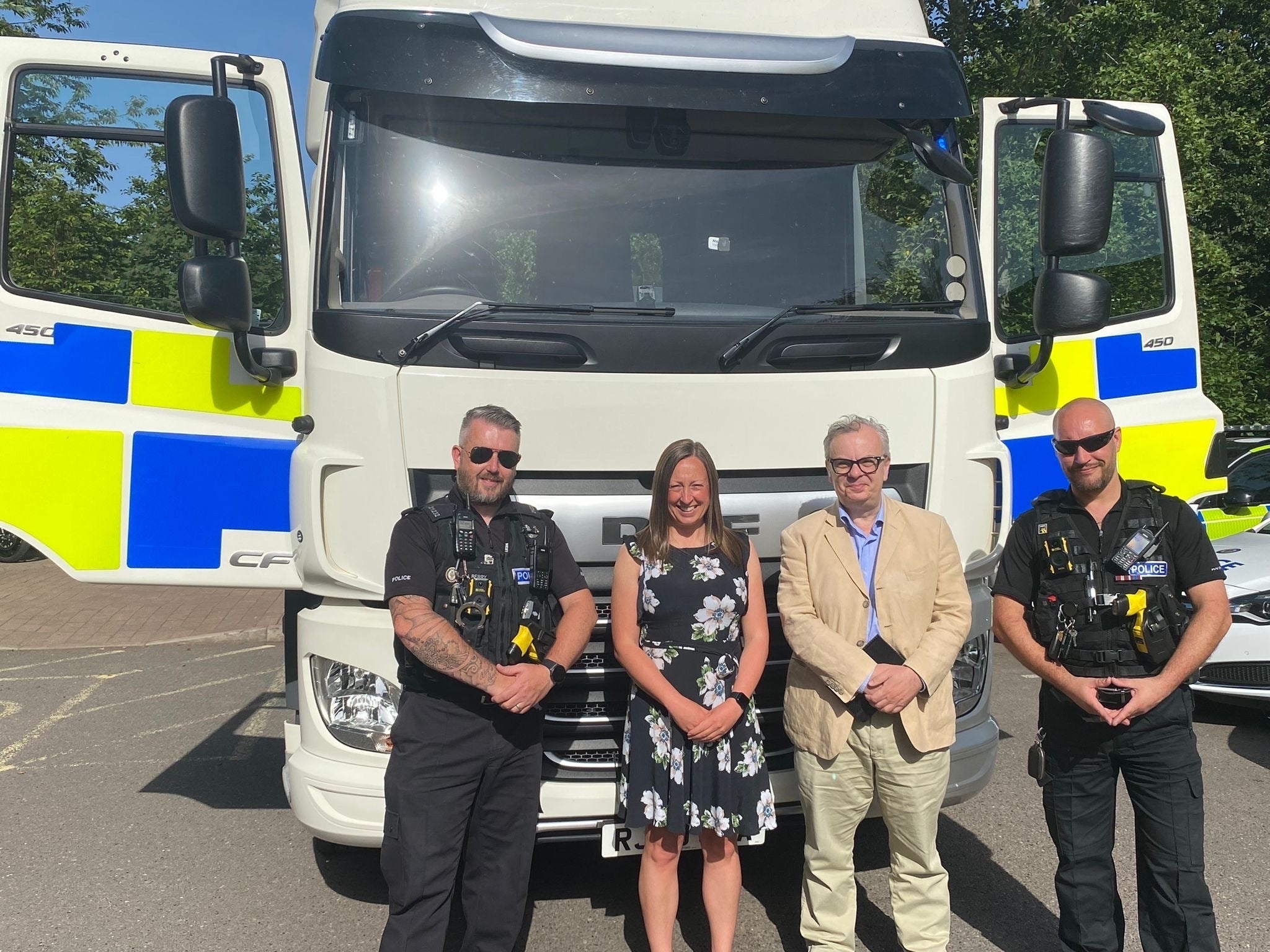On board with the police lorries keeping England’s motorways safe
Sean O'Grady went out with the officers making sure drivers are following the rules of the road


Carnage near Spaghetti Junction.” By the time this message came through to the Central Motorway Patrol Group, somewhere near Birmingham, I was already in the back of a marked patrol car and we were off to the scene of the road traffic collision.
The “carnage”, I’m pleased to say was mostly a matter of miles-long tailbacks caused by a lorry spinning a Peugeot 208 joining the motorway. Such was the scale of the congestion, the police car with its blue lights and siren could only just make its way past the thickets of vehicles stretching across four carriageways.
The car driver was in some pain, understandably, and there were worries, but this was a rather minor collision and still there was a National Highways patrol, two police cars, an ambulance, an ambulance lead officer, a fire engine, a fire lead officer (ready to cut the driver out of his car to prevent further injury), erm... and me. Around eight different public service workers, and key workers were tied up because of an incident that might easily have been avoided. Also, people can end up hurt and in hospital, like the Peugeot driver.
On top of that, as the police team were keen to point out to me, is the loss of time and money and the grief suffered by thousands of people stuck in a jam for the best part of an hour: the folks off to catch a plane and get on their honeymoon, a nurse trying to get to her shift, the delivery driver who’ll be late with his delivery, livestock stuck in hot weather and so on.
We’ve all been stuck in traffic so we all know how it is. Multiply the waste of time and extra costs by tens of thousands. Plus, of course, the incident could easily have been far worse, with incalculable human loss. The stoppage on a motorway will add a mile a minute to a queue, and the average motorway delay costs hundreds of thousands of pounds per hour. The experience of being on the other side, as it were, taught me that the emergency services try very hard to get the motorway running again – but it’s safety first and it takes time to clear damaged vehicles and injured people.
Therefore, the Highways Patrol officers and the police need to make sure our roads are safe and this means drivers behaving themselves. To do that they need to be able to see what drivers are up to. In a car, or from an SUV, it’s fairly easy to peer inside another car. But what about the van drivers and the truck drivers? They can’t be monitored quite so easily.
Like all police vehicles, it’s got exemptions from certain laws which means that it has no speed limitation at 56mph like other trucks, and indeed can exceed the motorway speed limit of 70mph
Enter the police lorry. To be precise a Daf big rig tractor cab unit, which is to say an articulated lorry but without the trailer and load. It’s one of three owned by the Highways Agency, lent out to police forces around England. In this case, it’s with a joint Staffordshire and West Midlands team on Operation Vertebrae (the region with much of the backbone of the motorway network running through it). In the time since the National Highways HGV Cab patrols have begun operating, they’ve identified 8,375 seat belt offences, 7,163 incidents involving mobile phones, and 2,083 have been followed up for not being in control of their vehicle; some 28,000 violations in all.
For a truck driver, the consequences of breaking the law are more severe than for a car driver. When a UK HGV driver is stopped for using his mobile phone by the police the fixed penalty given is six points and a £200 fine and it isn’t usually referred to the court system. Instead, it is referred to the Traffic Commissioner who will invite the driver in for a hearing and can revoke their vocational licence for four to 12 weeks.
I’m perched up here at the back of the cab with the police driver, PC James Berry and his colleague, PC Paul Sealey, both experienced officers of mature judgement. They work a 12-hour shift, with the statutory breaks for HGV drivers. They’ve seen a lot, not least because they have an unrivalled view of driving indiscretions, and are equipped with cameras to use in evidence if needs be. There’s no escaping a determined Brummie copper armed with a smartphone and an unmarked “plain clothes” lorry.

Like all police vehicles, it’s got exemptions from certain laws which means that it has no speed limitation at 56mph like other trucks, and can exceed the motorway speed limit of 70mph, but they don’t because such a sight would rather give the game away and it is by no means an ideal pursuit vehicle. The modus operandi is that the officers in the cab radio through to their colleagues in the marked and unmarked cars following, and they pull the driver over for some advice or something a little stronger. Others will receive a letter and a fine in the post.
But of course, it’s not a game, though it sometimes feels a bit cat-and-mouse. The most common crime is fumbling around trying to use mobile phones or other handheld devices and losing concentration, or even control, of the vehicle.
Some lorry drivers, it seems, have a Johnsonian sense that the rules don’t apply to them. They’ve caught drivers not just eating sarnies at the wheel but actually using the steering wheel as a makeshift kitchen work surface upon which to craft their lunch on the go. Apparently, it was only when the officer noticed the salad cream coming out that he realised the full enormity of the mobile catering operation. Making tea or coffee isn’t as rare as you’d think either, nor rolling a fag. Well, the M69 can be quite dull.

Such is the overconfidence that some truck drivers feel from their nest that they see no great necessity to wear a seat belt. This misdemeanour can only really be witnessed from a suitable police lorry unit, and is surprisingly common. Some truckers often go to ridiculous lengths just to avoid the “imposition” of wearing a simple piece of life-saving equipment. Apparently, they’ve been known to plug a device into the seat belt socket in order to “fool” the lorry’s electronics into thinking the seat belt is being worn. Others simply plug it in and sit on it. Some will even wear a T-shirt with a “seat belt” diagonal stripe across it that they think will evade detection.
During my few hours peering out of the cab – “spotting” – we managed to see lots of car, van and truck drivers doing stupid things: someone watching YouTube; the management type in the Range Rover doing his paperwork; butterfingers in the sugar tanker dropping his mobile; the Transit driver nodding off just as he was getting near to queuing traffic (there’s a window in the back of the tractor so the officer can see this); the old Honda Civic R weaving in and out of moving traffic. About a dozen were brought to book. Very often PCs Berry and Sealey were able to sense something awry just by watching the way the vehicle is behaving from a distance. It proves that in policing it’s the experience that counts: something to remember in the current rush to recruit.
It was a relatively modest haul, considering that the team had accounted for 52 miscreants the previous day, but it was still worthwhile. Only one of the people that I witnessed kicked off and started wanting the police not to touch him, which they weren’t doing. Eventually, he went on his way.
“It’s all about safety,” says the Inspector in charge, Dean Cassell. He explains that they, police officers, do understand there’s a difference between criminality and traffic. He takes the example, not far away from reality, when an otherwise law-abiding young academic was driving too fast and killed a 90-year-old man crossing the road. “The motorist was prosecuted and jailed for years. It ruined his life, even though he got into the car with no intention of doing anyone any harm, not like a burglar. People never set out to take a life on the road.” Driving offences are still crimes but there’s an absence of premeditated intent.
The more people who know there might be someone keeping a careful eye out from the cab of the lorry behind or alongside them, the less chance there might be that they take liberties, drink and drive, use drugs, or fall asleep at the wheel. If the offences are serious enough, then a Department for Transport traffic commissioner might even take the operator licence away from the driver’s company, as well as issuing a ban through the usual court system. The penalties can be prohibitive, which is really how it should be. Who wants to be hit by a truck?




Join our commenting forum
Join thought-provoking conversations, follow other Independent readers and see their replies
Comments